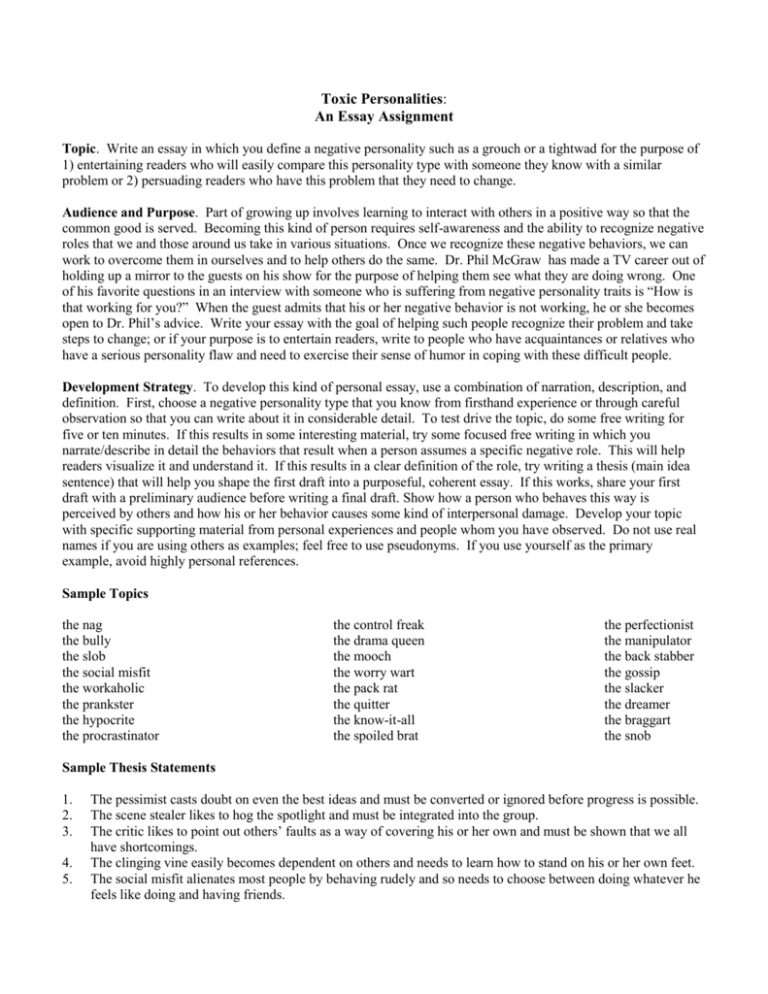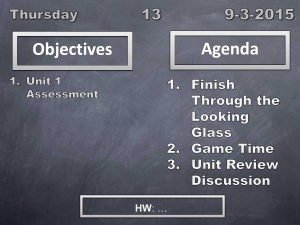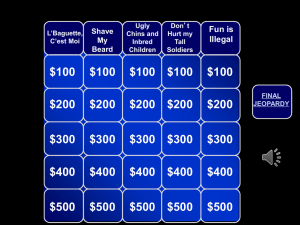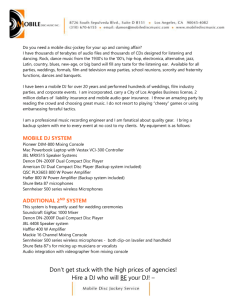Toxic Personalities: An Essay Assignment
advertisement

Toxic Personalities: An Essay Assignment Topic. Write an essay in which you define a negative personality such as a grouch or a tightwad for the purpose of 1) entertaining readers who will easily compare this personality type with someone they know with a similar problem or 2) persuading readers who have this problem that they need to change. Audience and Purpose. Part of growing up involves learning to interact with others in a positive way so that the common good is served. Becoming this kind of person requires self-awareness and the ability to recognize negative roles that we and those around us take in various situations. Once we recognize these negative behaviors, we can work to overcome them in ourselves and to help others do the same. Dr. Phil McGraw has made a TV career out of holding up a mirror to the guests on his show for the purpose of helping them see what they are doing wrong. One of his favorite questions in an interview with someone who is suffering from negative personality traits is “How is that working for you?” When the guest admits that his or her negative behavior is not working, he or she becomes open to Dr. Phil‟s advice. Write your essay with the goal of helping such people recognize their problem and take steps to change; or if your purpose is to entertain readers, write to people who have acquaintances or relatives who have a serious personality flaw and need to exercise their sense of humor in coping with these difficult people. Development Strategy. To develop this kind of personal essay, use a combination of narration, description, and definition. First, choose a negative personality type that you know from firsthand experience or through careful observation so that you can write about it in considerable detail. To test drive the topic, do some free writing for five or ten minutes. If this results in some interesting material, try some focused free writing in which you narrate/describe in detail the behaviors that result when a person assumes a specific negative role. This will help readers visualize it and understand it. If this results in a clear definition of the role, try writing a thesis (main idea sentence) that will help you shape the first draft into a purposeful, coherent essay. If this works, share your first draft with a preliminary audience before writing a final draft. Show how a person who behaves this way is perceived by others and how his or her behavior causes some kind of interpersonal damage. Develop your topic with specific supporting material from personal experiences and people whom you have observed. Do not use real names if you are using others as examples; feel free to use pseudonyms. If you use yourself as the primary example, avoid highly personal references. Sample Topics the nag the bully the slob the social misfit the workaholic the prankster the hypocrite the procrastinator the control freak the drama queen the mooch the worry wart the pack rat the quitter the know-it-all the spoiled brat the perfectionist the manipulator the back stabber the gossip the slacker the dreamer the braggart the snob Sample Thesis Statements 1. 2. 3. 4. 5. The pessimist casts doubt on even the best ideas and must be converted or ignored before progress is possible. The scene stealer likes to hog the spotlight and must be integrated into the group. The critic likes to point out others‟ faults as a way of covering his or her own and must be shown that we all have shortcomings. The clinging vine easily becomes dependent on others and needs to learn how to stand on his or her own feet. The social misfit alienates most people by behaving rudely and so needs to choose between doing whatever he feels like doing and having friends. Sample Essay Sarah Konwinski Mr. Stephens English II 5 February 2005 Coping with a Social Misfit Before I moved here from Oklahoma, I had a neighbor who challenged all of my preconceptions about normal, courteous behavior. My parents had raised me to consider others‟ feelings and to be polite as much as possible, so when the Caldwells moved into the big house next door, I wasn‟t prepared for their teenage son‟s totally inconsiderate behavior. His name was Damon, and at first glance, he appeared to be the perfect, All-American boy. However, he soon showed his true colors. My first encounter with Damon was on the very day he and his parents moved into the neighborhood. The early June sun warmed my back as I kneeled on the driveway in front of the garage, painting a set of bookshelves for my bedroom. When I heard someone clear his throat, I turned around and laid eyes on a cute 16-year-old with blond hair, a friendly smile, and an athletic physique. He introduced himself as the new kid on the block and asked me my name. I returned his smile and shyly introduced myself. He laughed and said, “Konwinski? What kind of name is that?” I told him it was Polish, and he laughed again and said, “Sounds like „corn whiskey.‟” Then he told me all of the Polish jokes he had ever heard. By then, I was almost in tears. Oblivious to the effect his ridicule was having on me, he finally said, “Well, Corn Whiskey, I‟ve got to get back home and help unload the van. I‟ll see you around.” My second encounter with Damon was a family affair. My parents, two sisters, and I were having a cookout the following weekend when Damon let himself in the side gate of the privacy fence that surrounded our back yard, walked over to the picnic table where we were just beginning our meal, sat down, and started making himself a hamburger. We were all flabbergasted that he just joined us uninvited. My dad was about to smack him when I said, “Hi, Damon. Have you met my family?” He grinned, nodded at my parents, and said, “Nice to meet the rest of the Konwinskis.” This time he pronounced our family name perfectly and winked at me. During the meal, he belched and broke wind without so much as excusing himself, and when my mother corrected him, he just laughed and said, “Pardon the gas.” I really wanted to like Damon. I mean he was cute, and he could be quite charming when he wanted to be. However, it was my third encounter with him that convinced me we could not be friends when school started back in the fall. In the heat of July, my friend Lindsey and I were sunbathing in the backyard one afternoon. We had just enjoyed a swim and were stretched out on air mattresses, floating around the pool and talking about her parents‟ pending divorce. She was still upset, and I was trying to comfort her. Damon was the farthest thing from my mind. As Lindsey expressed her concerns about living all by herself with her mother, I heard someone try the gate to the privacy fence, but I had long since started locking it after Damon‟s visit to our backyard cookout some weeks earlier. Suddenly, Damon‟s voice rang out, and I followed it to the large sweet gum tree that grew in his parents‟ backyard just on the other side of the privacy fence that divided the properties. Apparently, he had climbed the tree and peered over the fence to turn nosiness into voyeurism. “Hey, Corn Whiskey, who‟s the fat girl?” he shouted. Lindsey was startled and jerked around to see who had referred to her with such an unflattering label; in the process, she fell off her air mattress and started flailing about until I helped her to the ladder on the side of the pool. When I lost my temper and told Damon exactly what he was, he just laughed and shinnied down the tree. For lack of a better term, I call people like Damon social misfits. The social misfit alienates most people by behaving rudely and so needs to choose between having friends and doing whatever he feels like at the moment. It was no surprise to me when school started in the fall that Damon had trouble making and keeping friends and that he spent a lot of time in the principal‟s office. I lost track of him when we moved to Arkansas, but I hope he finally got a clue and learned how to relate to people. Essay Reminders. Don‟t forget: 1) a good essay consists of three basic parts: the introduction, the body, and the conclusion; 2) the main idea is stated clearly in one sentence called the thesis; 3) the topic is narrow and well developed; 4) the author writes about the topic from personal experience for an audience of readers who will benefit in some way from reading it; 5) the material is divided into paragraphs logically to make reading the essay easy; and 6) the topic is developed specifically, using one or more of the following development strategies: analogy, definition, description, cause/effect, comparison/ contrast, division/classification, examples, narration, and process analysis.





















